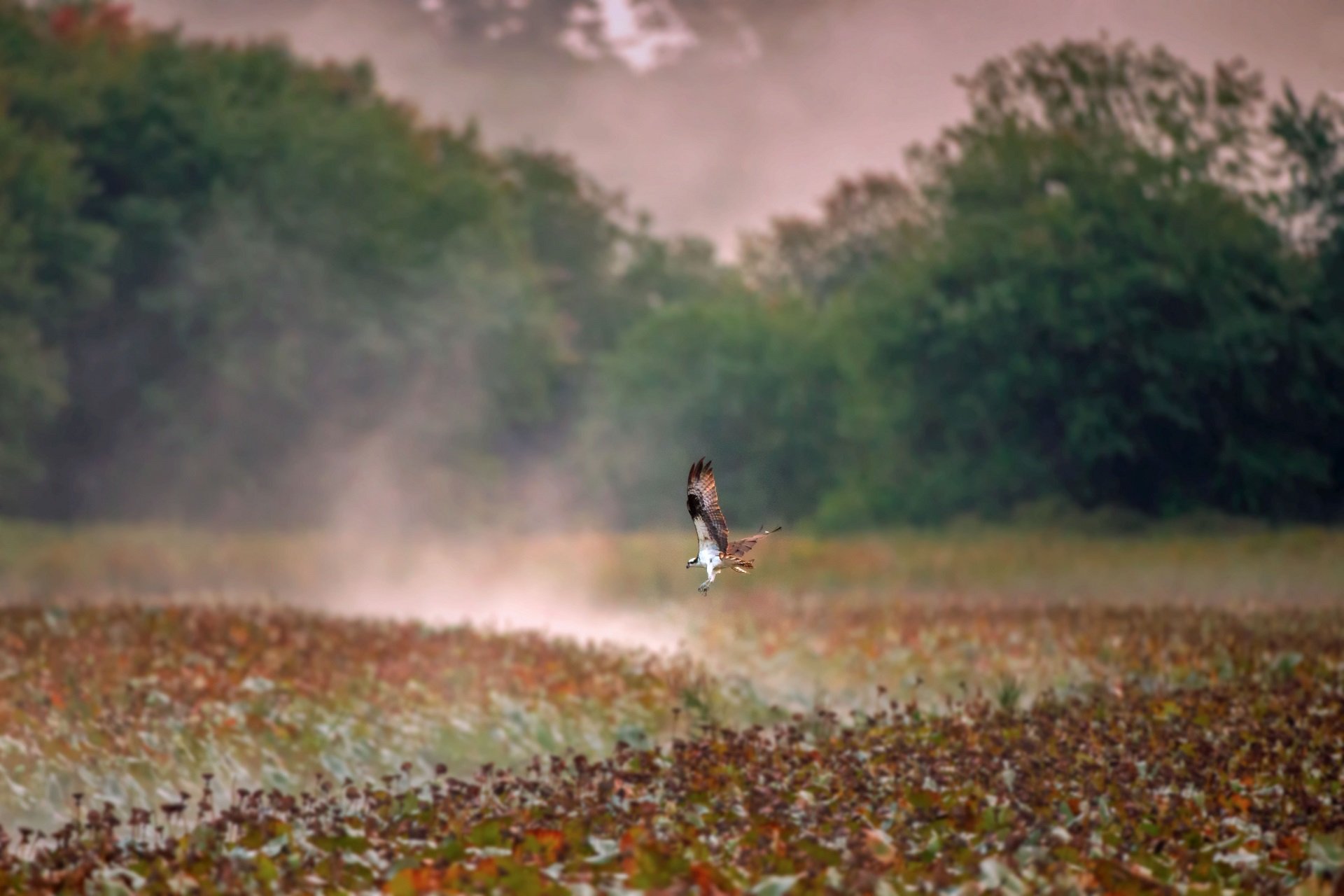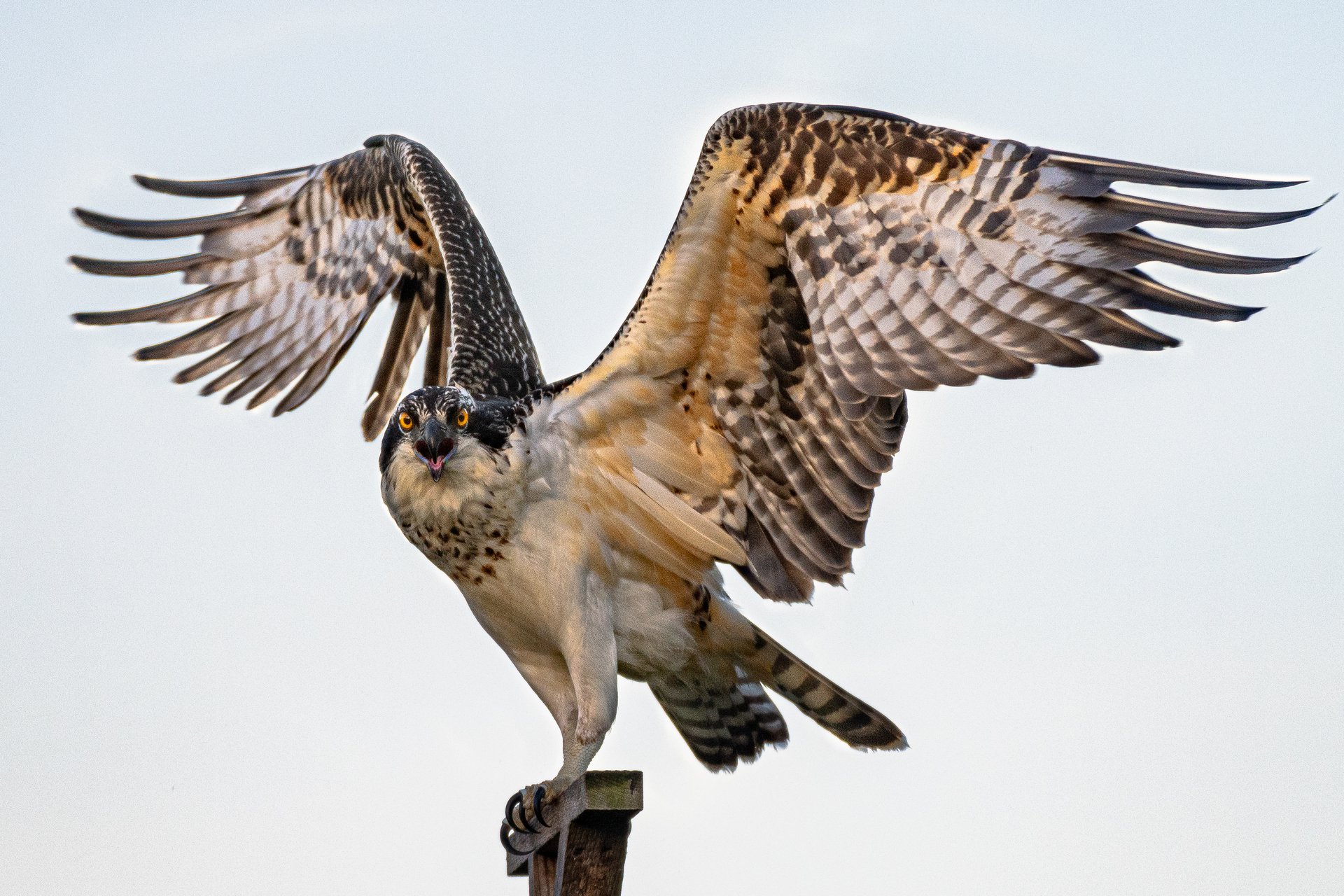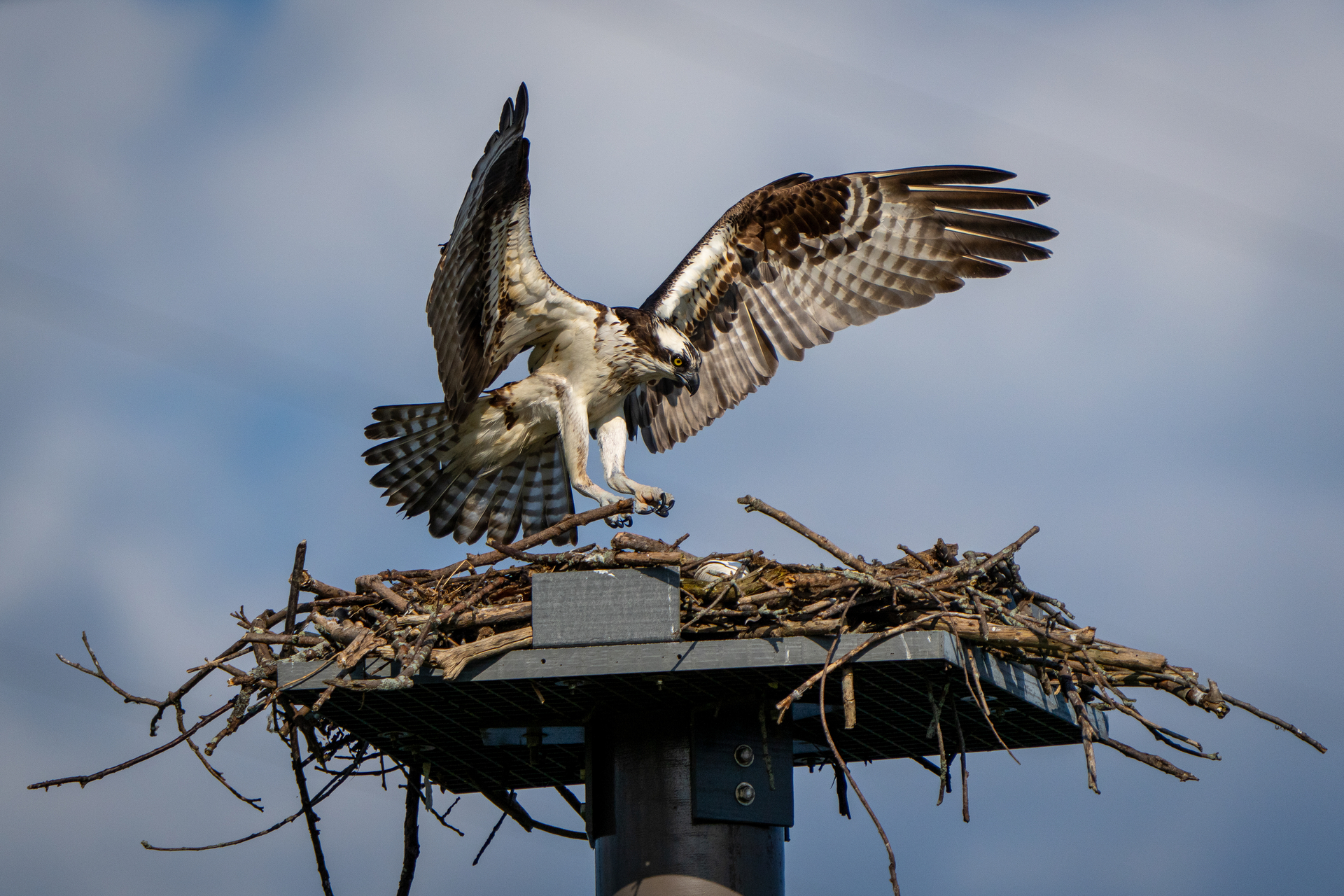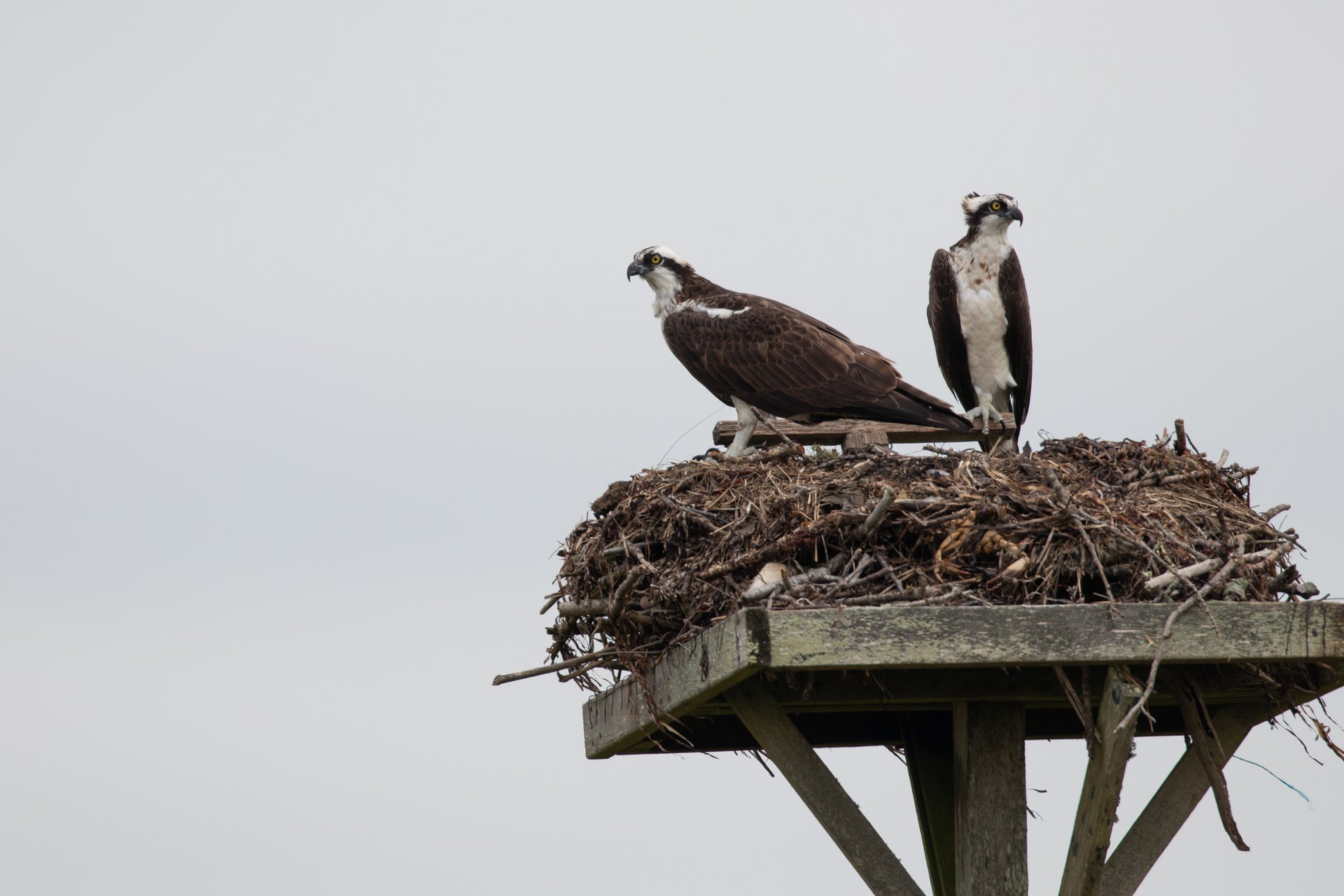Ospreys
Also known as fish hawks, Ospreys are raptors that survive on a diet of 99% fish. Every spring and summer, they can be found across the Commonwealth feeding in reservoirs, ponds, bays, and wherever else there are fish to be caught.
How to Identify Osprey
Ospreys are large hawks, with a strong brown and white pattern when seen from below. They are typically seen near water, and in summer they build large stick nests over the water. Except for Bald Eagles, they are the only hawks you will see diving into the water for food, and are often seen hovering in the air before a dive.
Osprey Wingspan
Osprey have a wingspan of about 5.5 feet. When they glide they hold their wings in a distinctive “M” shape.
Osprey Behavior
Ospreys are excellent hunters, and studies have found that an adult Osprey usually takes less than 15 minutes to catch a fish. Of course, inexperienced youngsters just beginning to hunt have a tougher time and, thus, a lower success rate. Incredibly, the size of their prey has been reported to average around half a pound, which is about 25% of the birds' body weight!
Ospreys employ several methods of hunting, depending on local conditions. A bird may hunt from a perch above a pond or lake, or from the air, surveying the area and using its visual acuity to scan the water below. Once a target fish is selected, the bird will dive nearly vertically, plunging into the water feet first, grabbing the fish with its talons, and flying off to a nearby perch to eat.
What Do Osprey Eat?
While their diet is primarily composed of fish, Osprey can been seen eating frogs, turtles, and even small mammals on rare occasions.
If an Osprey sees a fish swimming near the surface, it may hunt by approaching from a long gentle glide and plucking the fish from the water, an elegant-looking hunting strategy also commonly used by bald eagles.
Osprey Call
Osprey Nests
Osprey nests, often referred to as "eyries," are marvels of avian engineering. Constructed atop sturdy structures such as tall trees, telephone poles, or even artificial platforms, these nests are composed of an assortment of materials, including sticks, twigs, and seaweed. Their large size, sometimes reaching up to 6 feet in diameter, makes them highly visible along coastlines and near bodies of water.
Ospreys diligently maintain and add to their nests each breeding season, resulting in massive, durable structures. These nests serve as crucial sites for mating, nesting, and raising their young, with some nests being used by generations of ospreys over many years. Their strategic locations offer unparalleled views for hunting, ensuring the survival and prosperity of these majestic raptors.
Threats Facing Osprey
Pesticide DDT Use
As a fish eater, the osprey was one of the many species that was brought to the edge of extinction in by the use of the pesticide DDT. DDT was a potent pesticide, and in the environment, it broke down into a chemical that was stored in animals. The pesticide built up in the tissues of many predators, and it caused female birds to create eggshells that were thin and weak, and reproductive success seriously declined.
DDT was banned in the United States in 1972, and that led to a resurgence in Osprey and other hawk populations. Although the threat is gone in the U.S. and Canada, DDT is still used in some developing countries, and residues continue to be present in osprey tissues today.
Human Development
There are other human threats to Ospreys; for example, ospreys often build their bulky stick nests on utility poles, creating a serious danger of fire or electrocution. In addition, migrating ospreys are sometimes shot by farmers in the Caribbean islands and South America who mistake them for other hawks that hunt chickens. Also, pollution of lakes, rivers, and streams continues to be a hazard to ospreys.
Are Ospreys Endangered?
The species has never been formally listed as endangered or threatened by the U.S. Department of the Interior but was designated an "ecologically sensitive" species by the U.S. Forest Service. The bird is protected under the Migratory Bird Treaty Act, which provides protection for all birds of prey. Learn more in our Breeding Bird Atlas
How Mass Audubon is Helping Ospreys
South Coast Osprey Monitoring Project
Allens Pond Wildlife Sanctuary in South Dartmouth and Felix Neck Wildlife Sanctuary on Martha's Vineyard, along with the essential support of volunteers and partner organizations, annually monitors the breeding activity of Osprey. Through these osprey monitoring projects, we can foster their health and encourage population growth, which benefits the habitat as a whole.
How You Can Help Ospreys
Mass Audubon’s South East Osprey Monitoring Project is made possible by a team of dedicated volunteers and supporters. If you’re interested in helping ospreys, we encourage you to learn more about joining our conservation efforts.
Upcoming Bird Programs
See MoreWednesday Morning Bird Walk
-
Stony Brook Wildlife Sanctuary, Norfolk
-
Wednesday, April 2
8:00-9:30am
Adults
Wednesday Morning Birding at BNC
-
Boston Nature Center and Wildlife Sanctuary, Mattapan
-
Wednesday, April 2
8:00-10:00am
Adults
Wednesday Morning Birding
-
Newburyport and vicinity
-
Wednesday, April 2
9:30am-12:30pm
Adults
Stay Connected
Don't miss a beat on all the ways you can get outdoors, celebrate nature, and get involved.






